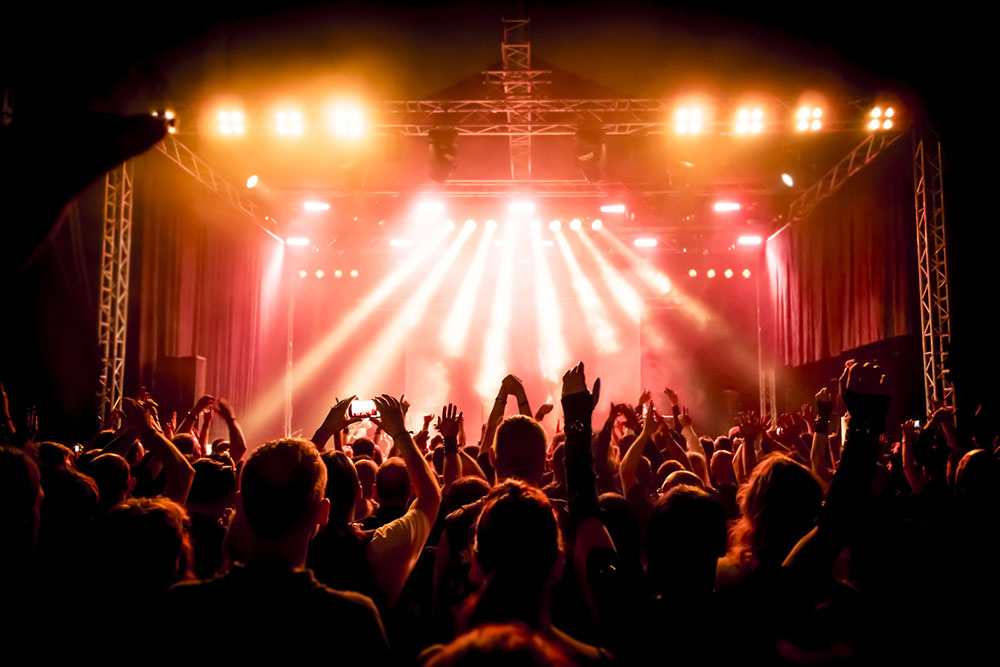8 safety tips for a delightful concert experience

Attending a concert is an unforgettable and beautiful experience. Everything seems to be perfect, from checking in to the venue, enjoying the food and beverages, and dancing to the tunes of favorite artists. However, these single- or multiple-day events host large crowds, with potential mishaps and safety concerns. Such a hostile atmosphere could ruin one’s experience, especially for first-timers. Follow these safety tips to enjoy the concert experience to its full potential.
Be in a group
Thousands of people attend concerts, especially if the artist is well-known. Considering this, ensure that one does not attend the concert alone, especially if they are attending an event for the first time. It is recommended that individuals travel in a group and stay close to their group members to avoid getting lost in the crowd. In case the group needs to split up for any reason, such as using the restrooms or stalls, each member should share their location with others through their smartphones and move in pairs. Additionally, the group should decide on a common meeting point before entering the concert venue so that it is easier to keep track of each other throughout the show.
Note the exit of the venue
Once the artist signs off from the stage, the crows leave immediately, causing a major block at the exit. This can take an individual a lot of time to exit the venue. Moreover, it might take another hour or so to list the parking lot if one leaves at the end of the gig. If one wishes to make it out on time, make note of the exits and stay close to them at all times. Leaving at least 15 minutes before the show ends could also help one save time when exiting the venue and parking lot is concerned. Staying near the exit is also helpful when leaving the venue in case of any emergencies or conflicts.
Carry backup power
Concert attendees can quickly drain their smartphone’s battery, especially if they start recording their favorite artists or uploading content to social media continuously. Therefore, to avoid running out of battery power, it’s always the best idea to carry backup power options, such as a portable charger or a power bank. This will ensure that one always stays connected to the internet and communicates with others in an emergency.
Keep arms in front of the body in a tight crowd
One might get stuck in a tight crowd while dancing to their favorite tunes. If this happens, and one cannot escape it quickly, they should protect themselves by holding their arms close to their chest and covering their head. Leaving little room between the arms and body could help create more distance between oneself and others, preventing injury to the head and lungs.
Carry first aid
A concert usually has multiple first aid counters and other health staff on-site to handle emergencies. However, navigating through the crowd and finding these individuals at a moment’s notice might get tedious. So, it’s best to carry a few supplies in the bag. One should also check if the venue allows specific prescriptions before they purchase tickets. Some concerts may ask the ticket holder to carry a doctor’s note if the individual needs to take prescriptions inside the venue.
Drink plenty of water
A music event usually starts during the day or early evening and extends into the night. And if the concert is held in an open-air space, it is likely to be sunny and hot. Even if the event is held indoors, it may become humid due to the number of people present in the area. Being exposed to high temperatures for extended hours can lead to dehydration and even cause one to lose consciousness. Therefore, it is essential to stay hydrated by drinking plenty of water and fluids while at the concert. One should also wear sunglasses and a hat and apply sunscreen to prevent sunburns. Concertgoers should also look for places to rest so that they can take breaks in between shows.
Limit cash in hand
Several stalls at the venue serve a variety of food, drinks, and other keepsakes. However, carrying cash while navigating through a large crowd could put one at risk of getting robbed. To avoid such incidents, one should consider making digital payments to the vendor using smartphones. This can also help keep track of expenses while providing a safe mode of payment at the concert. Additionally, one must avoid carrying important documents to the venue as they could be stolen or lost. However, since ID cards are usually mandatory at entry, one should store them carefully in their pockets or shoes.
Travel light
People who wear several layers and carry a lot of items in their pockets or backpacks may find it tedious to walk around in a large crowd. Additionally, one might have to be constantly vigilant of the things in one’s backpack to prevent potential theft. Therefore, one should check the overall atmosphere of the concert, including whether it’s an indoor or outdoor event, the expected crowd size, and the weather forecast before traveling. It is best to travel light and reduce the load on one’s back so that one can enjoy the concert and dance to their favorite tunes carefree.







